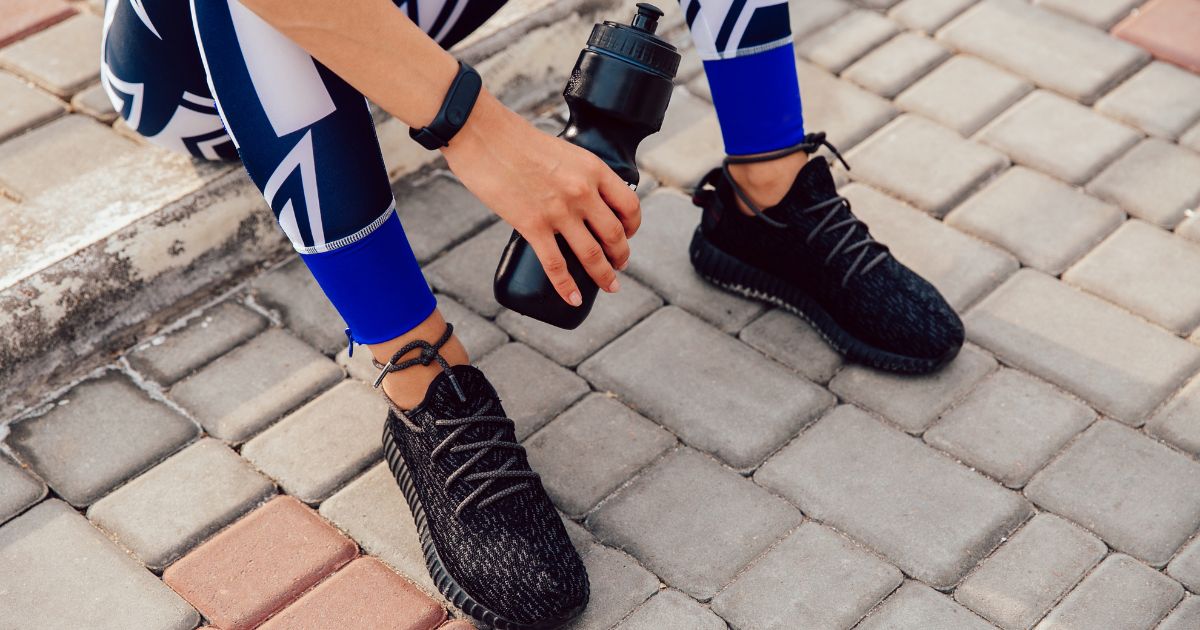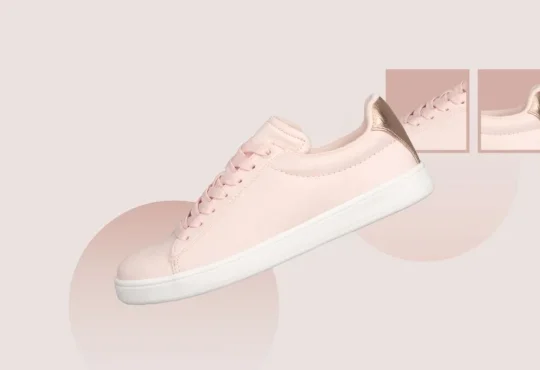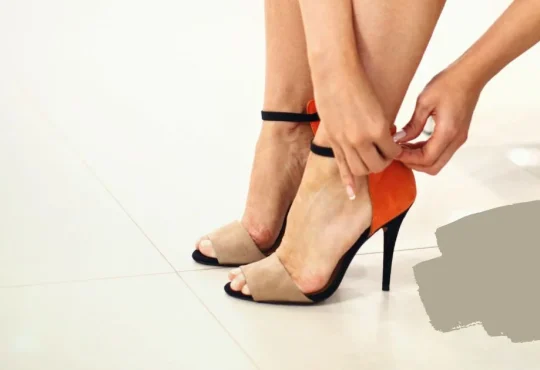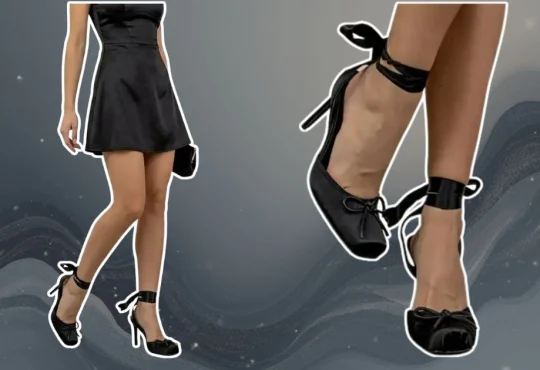Walking through a forest trail, the crunch of dry leaves becomes a beat. Steps across wooden planks add hollow, rhythmic echoes. Once considered incidental, these sounds are now captured, looped, and transformed into real-time music through innovative footwear technology.
This is the realm of footstep-sampling shoes — a revolutionary integration of footwear design, environmental sound sampling, and mobile music production. This advancement reshapes the relationship between motion, creativity, and sonic interaction, turning ordinary movement into immersive musical expression.
What Are Footstep-Sampling Shoes?
Footstep-sampling shoes are wearable audio technology built into footwear that captures and loops the acoustic characteristics of the surfaces you walk on — leaves, gravel, wood, puddles, tiles, concrete, snow, and more.
These shoes integrate:
- Built-in microphones (usually near the heel or sole)
- Miniature processors capable of real-time audio filtering
- Loop pedals or DAW (Digital Audio Workstation) compatibility
- Bluetooth or USB connectivity
- Storage and playback options for saved samples
The result? With every step, wearers generate rhythmic textures that can be layered, edited, or performed live, turning movement into music.
How Do They Work?
The concept hinges on real-time contact mic technology. As your sole strikes the ground, a sensor captures the exact tonal response — a soft squish in the mud, a metallic clank on maintenance hole covers, or a satisfying crunch on pebbled paths.
From there:
- Sensors isolate the footstep sound
- An onboard processor filters noise and enhances fidelity
- A loop station records the sample
- The user can layer multiple samples with live tempo adjustment
- Output plays via Bluetooth headphones or external speakers
Many prototypes feature gesture-based controls — for example, a heel tap triggers recording, a double-step clears a track, and a long press (via toe hold) saves a sample.
Who Are They For?
- Street musicians and buskers: Create ambient beats without carrying gear.
- Composers and sound designers: Build organic textures for films, games, and media.
- Walkers and hikers: Experience nature as a real-time soundscape.
- Urban explorers: Capture the sonic life of cities, from echoing alleyways to subway tiles.
- Dancers and performers: Integrate percussive rhythm directly into movement.
The shoes aren’t just about fun. They provide tools for sonic storytelling, environmental awareness, and even physical therapy, where rhythmic walking can encourage creative movement.
Creative Applications of Footstep-Sampling Shoes
The significance of footstep-sampling shoes extends beyond technological innovation, residing in the transformative experiences they enable. Through the fusion of sound design, physical movement, and environmental interaction, these advanced shoes open new avenues for storytelling, education, therapeutic practice, and artistic performance. The following sections highlight four impactful domains in which this technology reshapes the relationship between sound and spatial engagement.
1. Environmental Music Mapping
Picture yourself strolling through Central Park in New York during the autumn season. As your feet press down on fallen leaves, each rustle becomes a gentle snare sound. Stepping onto a wooden bridge produces deep, resonant bass tones, while a puddle underfoot sends out a splash that becomes a crisp hi-hat accent. With footstep-sampling shoes, musicians and adventurers can create compositions that capture the essence of a location, crafted not in studios but through the organic sounds of the environment itself.
This is Environmental Music Mapping, a creative practice in which users collect and organize footstep-generated soundscapes from specific environments. The shoes become mobile field recorders and instruments in one, allowing users to generate full percussive or ambient compositions simply by moving through a space.
Potential Experiences:
- Urban Sound Journals: Travelers could walk through different cities — Tokyo, Lagos, Berlin — and create percussive diaries of each urban environment, capturing the rhythm of subway stations, marketplaces, crosswalks, and alleyways.
- Nature Soundtracks: Environmentalists could record the sound textures of a rainforest path or glacier trail and use the resulting sound maps as part of educational campaigns or immersive documentaries.
- Sonic Heritage Projects: Sound artists might walk through abandoned towns or sacred lands to preserve the unique acoustic identity of a place before it disappears due to urban development or climate change.
These applications emphasize presence, memory, and place, offering a creative alternative to visual documentation like photography or videography.
2. Interactive Installations
In art galleries, science museums, or immersive storytelling spaces, footstep-sampling shoes could be integrated into interactive installations, where each step triggers an audio response tied to the exhibit’s theme.
For example, in a history museum, guests walking across a floor designed to look like a cobblestone road from 19th-century Paris might trigger:
- Footstep sounds layered with street chatter from the era,
- Horse-drawn carriage noises in the background,
- A violinist’s melody echoes from a hidden corner.
The acoustic environment shifts as guests move between zones, turning a passive walk into a narrative-driven sonic exploration.
Real-World Uses:
- Holocaust museums or war memorials could allow guests to hear archived voices or fragments of songs as they step through specific exhibit paths, enhancing emotional resonance.
- Science exhibits might sonify physical processes — e.g., stepping through a galaxy zone where each footstep triggers a musical representation of gravitational forces or cosmic expansion.
- Fashion or design exhibits could allow guests to create music by walking over different textile-covered surfaces emitting tonal responses when stepped on.
This format creates multi-sensory experiences in which visitors aren’t just observing but actively participating—their physical movement becomes part of the artistic or educational experience.
3. Therapy and Movement Arts
For individuals recovering from injury, trauma, or neurological conditions, movement can be both a physical challenge and an emotional hurdle. Footstep-sampling shoes introduce an element of reward, play, and creativity into the rehabilitation process, making every step something to look forward to.
Through subtle audio feedback — like a melodic chime, rhythmic tap, or ambient pulse — patients can:
- Track progress as the audio evolves with improved gait or balance,
- Engage emotionally by composing real-time music during therapy walks,
- Increase motivation with immediate sonic gratification that affirms each movement.
These shoes can be used in collaboration with physical, dance, or occupational therapists to encourage playful rehabilitation, improve proprioception, and reduce the psychological burden of repetitive physical tasks.
Applications in Movement Arts:
- Dance therapy sessions could incorporate shoes that sonify footwork, allowing clients to explore creative expression even with limited movement.
- Trauma recovery programs might use ambient footstep loops to help individuals reconnect with their bodies in a safe, controlled, and gently creative way.
- Parkinson’s or stroke recovery therapies can use beat-responsive feedback to guide rhythm and timing, improving walking patterns through subtle sonic pacing cues.
By turning movement into music, these shoes offer a tool for physical progress and emotional reengagement with one’s body and surroundings.
4. Music Education
Conventional music education typically focuses on using instruments, reading musical notation, and repetitive practice routines. But what if students could compose and experiment with sound simply by moving? Footstep-sampling shoes can revolutionize how rhythm and music theory are taught, especially for kinaesthetic learners or students who thrive outside conventional classroom structures.
Every step acts as a foundational element in constructing a musical phrase. As students walk across surfaces or deliberately choreograph movement patterns, they begin to understand:
- Tempo (faster steps = faster rhythm),
- Dynamics (stomping vs. soft stepping),
- Texture and layering (looping different samples together),
- Structure (arranging verses and choruses through mapped walking paths).
This approach encourages embodied learning, in which concepts are internalized not just through ears and eyes but through physical experience.
Educational Scenarios:
- Elementary students can learn beat patterns by walking out a rhythm and hearing it instantly.
- Special education programs can use sound-responsive shoes to engage non-verbal or neurodivergent students through sensory music play.
- High school composers might create live ensemble pieces by mapping out choreographed group movement across various sonic zones.
- Music production classes could pair the shoes with DAW software, letting students create loopable samples from outdoor field trips or campus walks.
By decentralizing instruments and putting creativity into motion, these shoes make music education more accessible, inclusive, and dynamic.
Challenges and Considerations
Despite their potential, Footstep-Sampling Shoes face several challenges:
- Durability vs. Sensitivity: Microphones must survive wear and tear while capturing detailed acoustics.
- Battery Life: High-performance processing drains power quickly during long walks or performances.
- Weight and Comfort: Balancing electronics with everyday usability is key to mass adoption.
- Latency: Sound must be processed with near-zero delay to stay in sync with natural rhythm.
- Environmental Ethics: Recording in sensitive habitats must be approached with care.
Future Developments
The next wave of innovation could include:
- AI-powered audio classification: Automatically label each sample by terrain (e.g., “gravel”, “puddle”, “glass”).
- VR integration: Walk through a physical space while generating music that controls your virtual environment.
- Haptic feedback: Let users feel the beat their steps are creating.
- Community sample sharing: A cloud where artists can upload and download footstep-based loops worldwide.
Companies could even launch geo-located challenges, encouraging users to sample soundscapes from specific cities or biomes and turn them into community-composed albums.
Where Wearables and Wonder Meet
Footstep-sampling shoes aren’t just tech gadgets. They’re a philosophy of presence—a way of hearing the world differently. They invite us to pay attention to what’s beneath our feet, transform daily motion into a creative act, and redefine walking as not just a means of travel but a method of musical expression.
As the lines between art, tech, and wearables blur, these shoes lead us toward a future where every step tells a story—and every story is a beat waiting to be heard.




